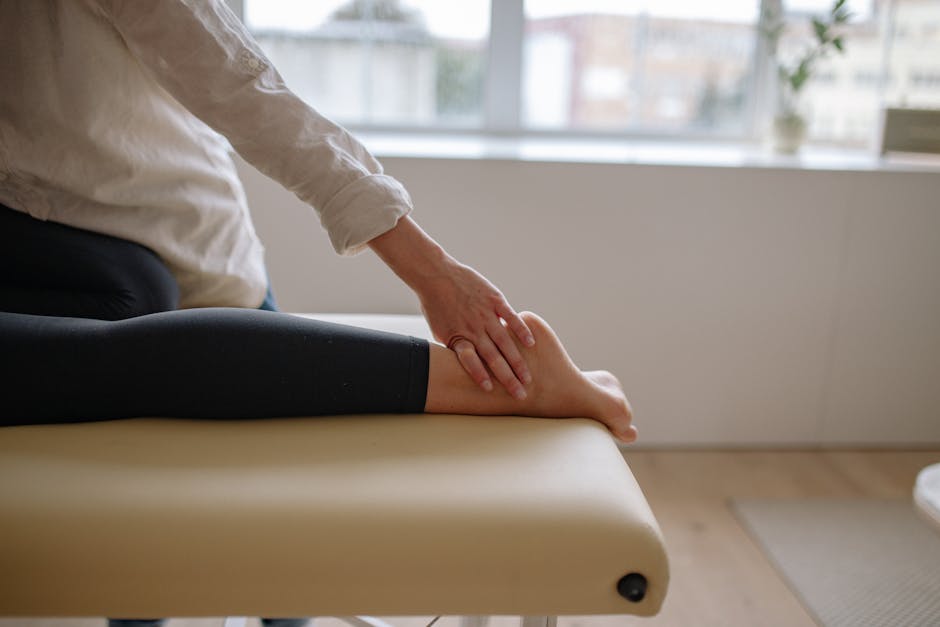How Can Body Scanning Techniques Reduce Stress?
Feeling stressed is like carrying an invisible backpack filled with bricks. It weighs you down, slows you, and sometimes, you don’t even realize how heavy it’s gotten. Body scanning techniques, a form of mindfulness meditation, can help you unpack that backpack, one brick at a time. By focusing on your body and tuning into its sensations, you can release tension and find calm in the chaos.
But how does it work? Why is it so effective? And how can you make it part of your life? Let’s dive in and explore the magic of body scanning for stress relief.
Key Takeaways
- Body scanning techniques involve focusing on different parts of your body to promote relaxation and reduce stress.
- They help you connect with your physical sensations and emotions, fostering a deeper mind-body connection.
- Regular practice can improve sleep, ease anxiety, and even support chronic pain management.
Introduction to Body Scanning Techniques
Definition of Body Scan Meditation
At its core, body scan meditation is a mindfulness practice where you direct your attention to different parts of your body, one at a time. Think of it as a mental journey from head to toe, checking in with each area to notice sensations, tension, or discomfort.
It’s not about fixing anything or judging what you feel. Instead, it’s about observing and accepting your body as it is in the moment.
Overview of Its Purpose in Stress Reduction
Stress often manifests physically—tight shoulders, clenched jaws, or a racing heart. Body scanning helps you notice these signs early. By bringing awareness to your body, you can release tension and calm your mind.
This practice is like hitting the pause button on a hectic day. It gives you a chance to reset and recharge, even if just for a few minutes.
Importance of Mind-Body Connection
The mind and body are like dance partners. When one is out of sync, the other stumbles too. Stress disrupts this harmony, but body scanning can restore it.
By paying attention to your body, you strengthen the connection between your thoughts and physical sensations. This awareness is key to managing stress and improving overall well-being.

How Body Scanning Techniques Work
Systematic Focus on Different Body Parts
Promoting Relaxation Through Awareness
Body scanning is like shining a flashlight on different parts of your body. As you focus on each area, you may notice tension you didn’t realize was there. Simply acknowledging it can help it melt away.
Enhancing Connection to Physical Sensations
When was the last time you truly noticed how your feet feel against the ground or how your chest rises and falls as you breathe? Body scanning brings you back to these simple, grounding sensations.
Training the Nervous System to Relax
Stress activates your fight-or-flight response, keeping your nervous system on high alert. Body scanning flips the switch, activating the rest-and-digest mode instead. This helps your body relax and recover.
Identifying and Relieving Stress Points
Sometimes, stress hides in unexpected places—a tight hip, a stiff neck, or even your stomach. Body scanning helps you pinpoint these areas and release the tension stored there.

Benefits of Body Scanning for Stress Reduction
Improved Relaxation and Calmness
Body scanning is like a mini-vacation for your mind. It helps you step away from worries and find a sense of calm.
Enhanced Awareness of Physical and Emotional States
By tuning into your body, you become more aware of how stress affects you. This awareness is the first step toward managing it effectively.
Support for Managing Chronic Medical Issues
Pain Relief
Chronic pain can feel overwhelming, but body scanning offers a way to cope. By focusing on your body, you can change how you perceive pain and reduce its intensity.
Anxiety and Sleep Improvement
Struggling to sleep because your mind won’t stop racing? Body scanning can help. It calms your thoughts and prepares your body for rest, making it easier to drift off.
For more tips on managing stress and improving sleep, check out this guide on mindfulness exercises (source).

Steps to Perform a Body Scan Meditation
Preparing for the Practice
Finding a Comfortable Position
Sit, lie down, or even stand—whatever feels best for you. The key is to be comfortable and relaxed.
Creating a Quiet and Relaxing Environment
Turn off distractions, dim the lights, and maybe light a candle. A peaceful setting makes it easier to focus.
Focusing on Each Body Part from Head to Toe
Start at the top of your head and slowly work your way down to your toes. Spend a few moments on each area, noticing any sensations or tension.
Maintaining a Nonjudgmental and Open Mindset
If your mind wanders, that’s okay. Gently bring your focus back to your body. Remember, there’s no right or wrong way to do this.

Incorporating Body Scanning into Daily Life
Making It a Regular Habit
Consistency is key. Try to practice body scanning daily, even if just for five minutes.
Approaching the Practice Without Specific Goals
Don’t stress about doing it perfectly or achieving a specific outcome. The goal is simply to be present with your body.
Integrating It with Other Stress Management Techniques
Body scanning works well alongside other practices like deep breathing or yoga. For more ideas, explore these effective stress management techniques (source).

Scientific Evidence Supporting Body Scanning Techniques
Studies on Stress Reduction and Relaxation
Research shows that body scanning can lower cortisol levels, the hormone responsible for stress. It’s a proven way to relax both your mind and body.
Research on Benefits for Anxiety and Sleep
Studies have also found that body scanning reduces anxiety and improves sleep quality. It’s a simple yet powerful tool for better mental health.
Evidence of Improved Overall Well-Being
Regular practice can enhance your overall quality of life, helping you feel more grounded and resilient.
For more on the science behind stress management, visit this article (source).
Practical Tips for Maximizing the Benefits of Body Scanning
Consistency in Practice
The more you practice, the more benefits you’ll see. Try to make it a daily ritual, like brushing your teeth.
Combining with Other Mindfulness Practices
Pair body scanning with other techniques like journaling or gratitude exercises for a well-rounded approach to stress relief.
Adapting the Technique to Individual Needs
Everyone’s body is different. Feel free to modify the practice to suit your needs and preferences.

Conclusion
Summary of Key Points
Body scanning is a simple yet effective way to reduce stress, improve relaxation, and connect with your body.
Encouragement to Incorporate Body Scanning into Stress Management Routine
Whether you’re dealing with daily stress or chronic issues, body scanning can be a valuable tool. Why not give it a try?
Final Thoughts on the Importance of Mindfulness Practices
In a world that’s always rushing, taking a moment to pause and listen to your body is a gift. Body scanning reminds us to slow down, breathe, and just be.
For more ways to manage stress, explore this helpful guide (source).
Body scanning isn’t just a technique—it’s a lifeline in today’s fast-paced world. So, take a deep breath, close your eyes, and start your journey to a calmer, more mindful you.
FAQ: Discover How Body Scanning Techniques Can Help You Reduce Stress
What is body scanning, and how does it work?
Body scanning is a mindfulness practice where you focus your attention on different parts of your body, often starting from the toes and moving upward. It helps you become more aware of physical sensations, tension, or discomfort, promoting relaxation and reducing stress by fostering a connection between mind and body.
How can body scanning techniques help reduce stress?
Body scanning helps reduce stress by encouraging relaxation and mindfulness. By focusing on the present moment and releasing physical tension, it interrupts the cycle of stress and anxiety, allowing your body and mind to reset and calm down.
Do I need any special equipment or training to practice body scanning?
No special equipment or training is required for body scanning. All you need is a quiet space where you can sit or lie down comfortably. Guided audio recordings or apps can be helpful, especially for beginners, but they are not necessary.
How long does a typical body scanning session take?
A typical body scanning session can last anywhere from 5 to 30 minutes, depending on your preference and schedule. Even a short session can be effective in reducing stress and promoting relaxation.
Can body scanning be practiced by anyone?
Yes, body scanning is suitable for people of all ages and fitness levels. It is a gentle and accessible practice that can be adapted to individual needs, making it an excellent stress-reduction technique for almost everyone.
How often should I practice body scanning to see results?
Practicing body scanning regularly, even just a few times a week, can lead to noticeable stress reduction and improved mindfulness. Consistency is key, so find a routine that works for you and stick with it.
Are there any scientific studies supporting the effectiveness of body scanning for stress reduction?
Yes, numerous studies have shown that body scanning, as part of mindfulness-based stress reduction (MBSR) programs, can significantly reduce stress, anxiety, and even symptoms of depression. It has been widely recognized as an effective tool for mental and physical well-being.
Can body scanning help with physical pain as well as stress?
Yes, body scanning can help with physical pain by increasing awareness of tension and discomfort in the body. This awareness can lead to relaxation and a reduction in pain perception, making it a useful tool for both stress and pain management.
Can I combine body scanning with other relaxation techniques?
Absolutely! Body scanning can be combined with other relaxation techniques like deep breathing, meditation, or yoga to enhance its stress-reducing effects. Experiment with different combinations to find what works best for you.
What are some common challenges beginners face with body scanning, and how can they overcome them?
Beginners often struggle with maintaining focus or feeling impatient during body scanning. To overcome these challenges, start with shorter sessions and guided practices. Remember, it’s normal for your mind to wander—gently bring your focus back to your body without judgment.


